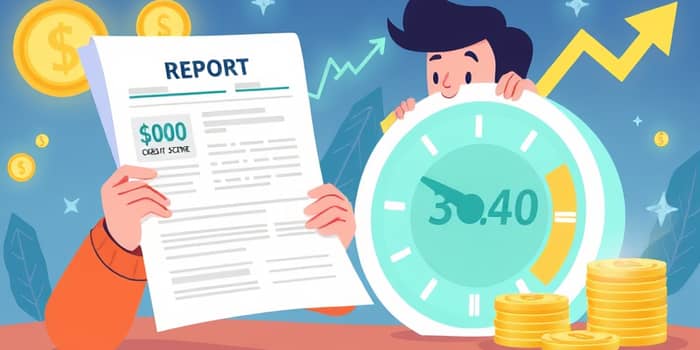
Credit can feel like an enigma that dictates your financial opportunities, from securing a mortgage to unlocking favorable interest rates. Yet many people conflate two distinct concepts — the credit report and the credit score — which together form the foundation of your financial reputation. By demystifying each component and illustrating how they intertwine, you can gain greater control over your financial future and confidently navigate major life decisions.
A credit report is essentially a comprehensive ledger of your borrowing and repayment history, compiled by major credit bureaus. It contains detailed information about your credit accounts, payment patterns, credit limits, outstanding balances, and any public records such as liens or bankruptcies. In essence, this document serves as a detailed record of your credit history that lenders, landlords, and other entities review to assess your reliability.
Beyond account listings, a credit report also logs soft and hard credit inquiries, reflects any collections or derogatory marks, and verifies your personal identifying details. Regularly reviewing this report not only helps you spot inaccuracies but also aids in detecting potential identity theft early. Equifax, Experian, and TransUnion each maintain their own version of your report, and slight variations can exist among them.
While a credit report lays out the full narrative of your financial actions, a credit score condenses that story into a single, three-digit number—usually ranging from 300 to 850. This numerical snapshot offers creditors a quick gauge of your creditworthiness. A high score implies that you have consistently managed debt responsibly, making you a lower lending risk.
Credit scoring models, such as FICO and VantageScore, analyze the data in your report to generate this figure. Approximately 35% of your FICO score is influenced by payment history, while credit utilization, length of credit history, credit mix, and new inquiries make up the remainder. Because each model weighs factors differently, scores can vary slightly across platforms.
Though both the credit report and credit score play pivotal roles in lending decisions, they serve unique purposes. Understanding these distinctions allows you to focus on the right actions—whether you need to correct errors in your report or build habits that boost your score.
Your credit score is intrinsically linked to the data in your credit report. Every on-time payment, every paid-off credit card balance, and every paid-in-full installment loan feeds into the algorithms that calculate your score. Conversely, late payments, collections, or public records such as bankruptcies can significantly drag your score downward.
When you apply for a loan or credit card, the lender reviews both your report and score. The report provides a granular view of your debt obligations and payment timelines, while the score delivers a concise measure of your credit risk. By regularly checking both, you’ll be better positioned to spot discrepancies, understand their effects, and take corrective action before applying for new credit.
Multiple agencies and scoring methods exist, each playing a role in constructing your financial identity. It’s important to know which ones are most influential and how they differ.
Regular monitoring of your credit report and score empowers you to take charge of your financial well-being. By reviewing your report, you can detect errors—perhaps an account you never opened or incorrect payment status—that could be unfairly dragging down your score. Spotting fraud attempts early can save you considerable stress and financial damage.
Meanwhile, tracking your score over time helps you observe the impact of your actions. Did that debt payoff push your score higher? Are new inquiries causing temporary dips? Armed with this knowledge, you can adjust your strategies, whether that means paying down balances faster or spacing out credit applications.
Imagine you’ve fallen behind on a few credit card payments. These late entries appear on your credit report, and your score plummets. When you next apply for an auto loan, the lender sees a low score and charges a higher interest rate, costing you thousands more in finance charges.
Conversely, consider a borrower who has maintained a spotless payment history and kept balances low. Their report is clean, and the resulting high credit score opens doors to the best mortgage rates. Over the life of the loan, that small percentage difference translates into tens of thousands saved.
Developing and sustaining strong credit habits doesn’t require drastic overhauls—just intentional steps. First, always aim to keep credit utilization below thirty percent across all your cards. Second, set up automatic payments to ensure you never miss a due date. Third, review your credit report at least once a year to catch and dispute inaccuracies.
Additionally, avoid opening multiple new accounts in a short period; each hard inquiry can shave points off your score. Finally, diversify your credit mix by responsibly managing both installment loans and revolving credit. Over time, these small moves add up to lasting improvements in your score and greater financial freedom.
Understanding the distinction between your credit report and your credit score is the first step toward mastering your financial narrative. The report offers a deep dive into your credit behaviors, while the score provides a snapshot of your risk profile. By proactively monitoring both, correcting errors promptly, and adopting healthy credit habits, you position yourself for the best loan terms, lower interest rates, and greater peace of mind.
Embrace the power of knowledge: take control of your credit today and pave the way for a brighter financial tomorrow.
References













